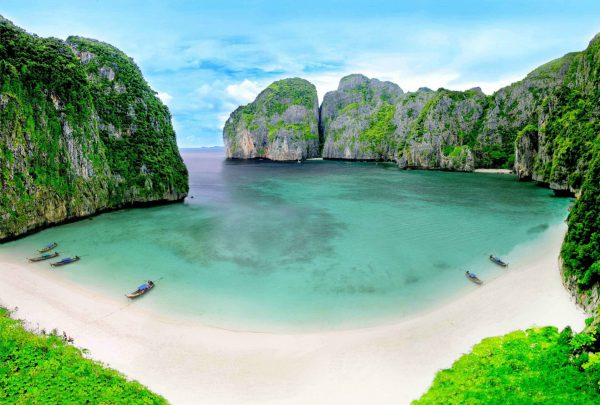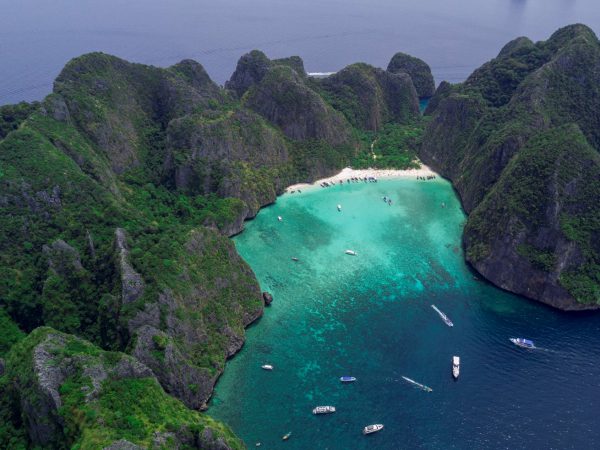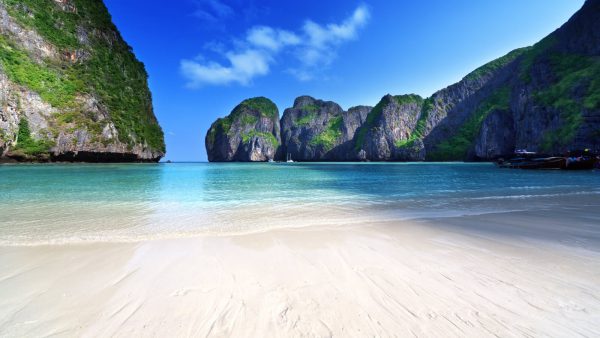CHIANG RAI, 6 January 2022: Parking 375 tourists on a 250-metre long and 15-metre wide strip of sand might seem to be overdoing it, but that is the visitor cap for those who want to return to admire Phi Phi Island’s Maya Bay in southern Thailand.
Following a three year hibernation from mass tourism, Maya Bay reopened on 1 January, albeit restricting the daily footfall to 4,125 with visits limited to no more than 375 visitors per one-hour session. At the height of its popularity in 2018, 5,000 tourists visited the famous bay daily on a fleet of more than 200 boats that dropped anchor in the tiny bay. The daily disruption destroyed coral and the nursery habitat of the black-tip reef sharks.

Maya Bay shot to fame in 2000 when it served as the filming location for the Leonardo DiCaprio movie ‘The Beach’. By the time the five-month tourist season of 2018 dawned, the national park, where the bay resides, generated earnings of THB362 million extracted from 1.2 million tourists (around 70% of them foreigners.)
The new cap is not much less than the footfall that ultimately forced Thailand’s Department of National Parks to close the bay in 2019. It is also noteworthy that 80 tour operators arrived on the island in late December to go over the new rules and regulations to plan the return of their commercial endeavours. Thankfully the impact of Covid-19 will curtail the immediate footfall at Maya Bay, but once mass tourism rumbles back to life will the Department of National Parks be able to keep the success story alive that has seen an amazing restoration of the coral and marine life in the bay?
There are some positive indicators in the set of new rules. Still, it will require a radical reset of the mentality that drives tour operators who view natural attractions as their personal property to generate profits without a thought for restoration.
New rules to protect Maya Bay
Boats will drop all visitors off at the deeper bay of Loh Samah, where visitors will disembark and walk to Maya Bay. Boats are prohibited from anchoring in the bay.
Admission is limited to 375 people per one-hour session. Visits must be pre-booked. The number of sessions per day depends on park management, but opening hours are from 0700 to 1800 (11 hourly sessions – maximum daily footfall 4,125).
Swimming is prohibited, and that includes snorkelling and “playing in the shallow bay to eliminate negative impacts on the local reefs and marine creatures.
Maya Bay has undergone a fantastic restoration of its coral reef and sea life that involved the propagation of 15,000 organic corals, but marine scientist Thon Thamrongnawasat who exposed the dreadful impact tourism inflicted on the bay that led to the three-year closure, warns it will take another 10 years to restore the bay entirely.
Will Thailand’s tourism industry toe the line and support the ongoing restoration work, or will it once again be guilty of circumventing rules to destroy the pristine world of Maya Bay? The jury is still out on that one.








